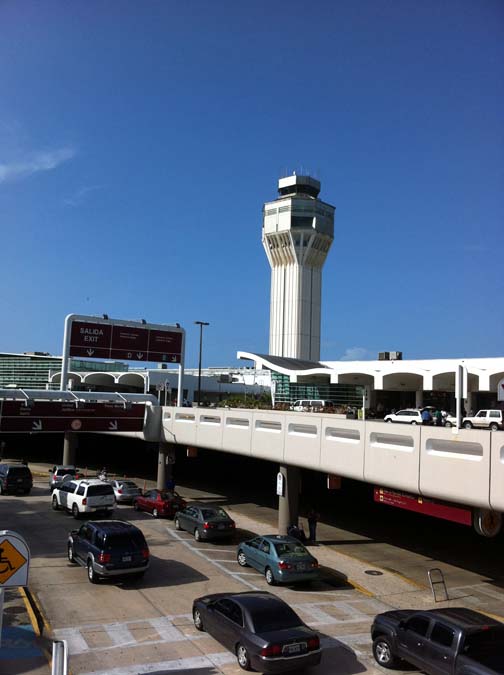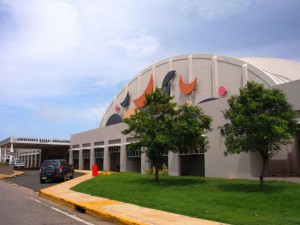FAA clears Aerostar to assume control of San Juan airport

Saying the Puerto Rico Ports Authority has the authority to lease the Luis Muñoz Marín Airport in San Juan to Aerostar Airport Holdings, the U.S. Department of Transportation’s Federal Aviation Administration confirmed its approval of the public-private partnership that will officially transfer control of the facility to the consortium.
“Aerostar has developed a plan to manage the transition of the airport from public to private control that satisfied the requirement for a description of the private operator’s airport management and operations experience,” said the FAA in a 42-page document released this morning.
In the lengthy document signed by Christa Fornarotto, associate administrator of airports, the FAA explained its rationale for approving the controversial P3 agreement a little more than four years after Ports filed an application in 2009 to participate in the agency’s Airport Privatization Pilot Program.
Aerostar — a consortium comprised by Grupo Aeroportuario del Sureste and Highstar Capital — was selected and signed the lease agreement with the government in July 2012.
Through the agreement, Aerostar will make an upfront payment of $615 million to the Ports Authority and subsequent payments through the life of the 40-year lease. In addition to the fees, Aerostar is required to establish the “Puerto Rico Air Travel Promotion and Support Fund” and provide $6 million for that purpose to reward airlines that increase their service during the first three years of the lease agreement.
Aerostar plans to finance upfront fee through a combination of debt financing of $350 million in investment grade bonds and $265 million in equity. Future lease payments starting at the end of year one will be made from revenue generated through the airport’s operation.
According to the document, Ports has been authorized to use the money as follows:
- $500 million to pay off its outstanding in debt due in the summer;
- $50 million to launch an early retirement program that could benefit 224 agency employees;
- $15 million to set up a contingency reserve at the Government Development Bank;
- $20 million to cover transaction costs;
- $25 million to establish a regional airports reserve fund to support operating expenses and capital needs of the island’s remaining 10 airports; and,
- $5 million to cover a potential payment to the Internal Revenue Service;
In addition to the immediate financial benefit, the FAA has exempted Ports from having to repay some $50 million in outstanding federal government grants.

Rafael Hernández Airport in Aguadilla is one of 10 regional facilities Ports will improve over the next 40 years. (Credit: © Wikipedia)
Regional airports
In its decision, the FAA also addressed the thorny issue of the future of the island’s regional airports. While opponents to the transaction have said the P3 benefits LMM only, the government has insisted it will use lease money to improve and expand operations at the regional facilities.
In its “Regional Operational Plan,” Ports has committed to improving its leasing policy at the airports to begin working toward having self-sustaining operations. However, in the plan, the agency projected total revenue of $848.4 million and expenses of more than $1.1 billion over the next 40 years, leaving a deficit of $267.1 million.
“[Ports] contends that Maritime Net Revenues are expected to grow to $1.2 billion over the next 40 years and states that it can and will use the revenue to cover regional airports maintenance expenses,” the document states.
The agency will also be required to pump all future LMM lease payments into its regional airports, the document noted.
Future transactions
While the P3 agreement excludes certain airport facilities — the on-site hotel, the cargo facilities controlled by Caribbean Airport Facilities and the Puerto Rico Air National Guard Airbase — the contract gives Aerostar first dibs on the leases if Ports were to make them available, the FAA document states.
The company will be prohibited from increasing airline landing and terminal fees during the first five years of the lease, during which the fees will be capped at $62 million. After the sixth year, airline fees will be increased annually at a proportion not to exceed the rate of inflation.
However, any such transfer would have to be approved by the FAA, the agency noted.
Gov. Alejandro García-Padilla is expected to hold a press conference sometime today to discuss the FAA’s decision and next steps. The closing of the Lease is pending the completion of certain closing steps by the Ports Authority.














